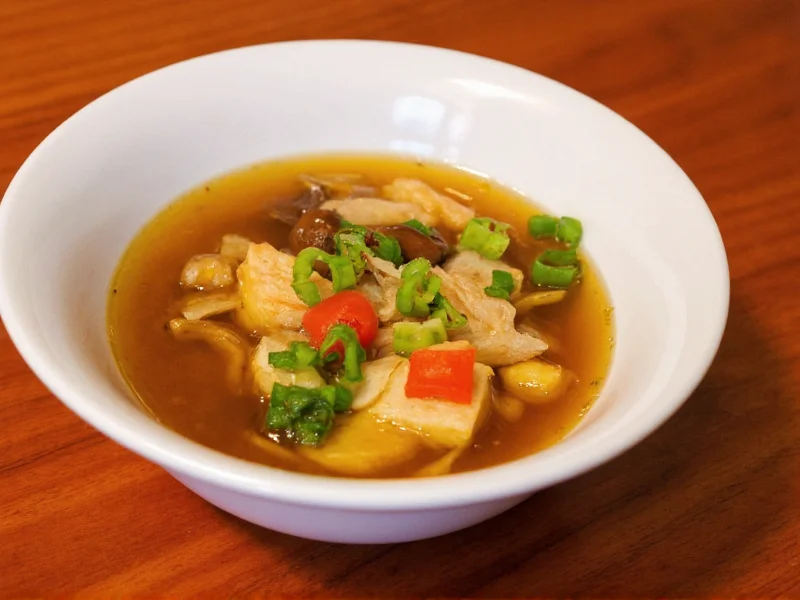Originating from Indigenous agricultural traditions across North America, three sisters soup represents more than just a meal—it embodies a sophisticated understanding of sustainable farming and nutritional synergy. The “three sisters” refer specifically to corn, beans, and squash, which Native American communities discovered grow exceptionally well together while providing complementary nutrition when consumed as a complete meal.
The Three Sisters: Agricultural Harmony
This ancient companion planting system creates a self-sustaining ecosystem where each plant supports the others:
| Plant | Role in the Ecosystem | Nutritional Contribution |
|---|---|---|
| Corn | Provides tall stalks for beans to climb | Carbohydrates, B vitamins, and minerals |
| Beans | Fix nitrogen in soil for other plants | Protein and amino acids missing in corn |
| Squash | Large leaves shade soil, preventing weeds | Vitamins A and C, healthy fats from seeds |
This agricultural wisdom, developed over centuries by Haudenosaunee (Iroquois) and other Indigenous nations, demonstrates remarkable ecological understanding. When prepared as three sisters soup, these ingredients create a nutritionally complete meal that sustained communities through harsh winters.
Cultural Significance of Three Sisters Soup
The three sisters represent a sacred relationship in many Indigenous cultures, often featured in origin stories and spiritual practices. For the Haudenosaunee people, the three sisters are considered gifts from the Creator, with each plant possessing its own spirit. Preparing three sisters soup maintains this cultural tradition while honoring sustainable food practices.
Unlike modern industrial agriculture that often depletes soil, the three sisters system actually improves land quality with each growing season. This regenerative approach has gained renewed attention as contemporary farmers seek sustainable alternatives to chemical-dependent monoculture.
Nutritional Powerhouse
Three sisters soup offers exceptional nutritional benefits that made it a survival food for Indigenous communities:
- Complete protein profile – Corn provides carbohydrates while beans contribute essential amino acids that corn lacks
- High fiber content – From all three components, supporting digestive health
- Vitamin diversity – Squash adds vitamins A and C, while corn contributes B vitamins
- Mineral richness – Particularly magnesium, potassium, and zinc from the combination
- Naturally gluten-free – Making it suitable for various dietary needs
This traditional three sisters soup recipe requires no animal products, though some variations include meat or fish depending on regional adaptations. The complete protein profile makes it an excellent plant-based meal option.
Authentic Three Sisters Soup Recipe
Creating an authentic three sisters soup requires respecting the traditional ingredients while adapting to modern kitchens. This recipe serves 6 and takes approximately 1 hour 15 minutes (including soaking time).
Ingredients
- 1 cup dried corn kernels (hominy or field corn)
- 1 cup dried beans (navy, pinto, or kidney)
- 2 cups cubed winter squash (butternut or acorn)
- 1 large onion, diced
- 3 cloves garlic, minced
- 6 cups vegetable broth or water
- 2 tbsp cooking oil or rendered animal fat
- 1 tsp dried sage
- Salt to taste
- Fresh herbs for garnish (optional)
Step-by-Step Preparation
- Soak beans overnight – Place dried beans in a large bowl with enough water to cover by 2 inches. Soak for 8-12 hours.
- Prepare corn – If using dried field corn, soak for 2 hours before cooking. Hominy requires no soaking.
- Sauté aromatics – Heat oil in a large pot over medium heat. Add onions and garlic, cooking until translucent (about 5 minutes).
- Cook corn – Add soaked corn and 4 cups broth to the pot. Bring to a boil, then reduce heat and simmer for 45 minutes.
- Add beans – Drain soaked beans and add to the pot with sage. Simmer for another 30 minutes.
- Incorporate squash – Add cubed squash and remaining broth. Cook for 15-20 minutes until squash is tender.
- Season and serve – Adjust salt to taste. Garnish with fresh herbs if desired.
Variations and Modern Adaptations
While traditional three sisters soup remains cherished in its original form, several adaptations make this nutrient-dense meal accessible to contemporary cooks:
- Quick version – Use canned beans and pre-cut squash to reduce preparation time to 30 minutes
- Protein boost – Add diced turkey, chicken, or venison for non-vegetarian versions
- Seasonal variations – Summer versions might include fresh corn and zucchini instead of winter squash
- Dietary adaptations – For low-sodium diets, use homemade broth without added salt
- Smoky flavor – Add a pinch of chipotle powder or smoked paprika for depth
When making three sisters garden soup, remember that the essence lies in the relationship between the three core ingredients—not in elaborate additions. Authentic three sisters soup celebrates simplicity and nutritional wisdom.
Serving and Storage Tips
Three sisters soup tastes even better the next day as flavors continue to meld. For optimal enjoyment:
- Serve hot with a side of cornbread for a complete traditional meal
- Store in airtight containers in the refrigerator for up to 5 days
- Freeze portions for up to 3 months—thaw overnight in refrigerator before reheating
- Reheat gently on stove to preserve texture of beans and squash
- Consider adding fresh herbs just before serving reheated soup
This traditional three sisters soup recipe creates approximately 8 cups of nourishing soup. The leftovers often develop even deeper flavors as the ingredients continue to blend during storage.
Preserving Cultural Heritage Through Food
When preparing three sisters soup today, we participate in a living tradition that spans centuries. Many Indigenous communities continue to grow and prepare the three sisters using traditional methods, maintaining agricultural knowledge that modern science is only beginning to fully appreciate.
By understanding and preparing authentic three sisters soup, home cooks honor sustainable food practices that offer solutions to contemporary challenges like soil depletion and nutritional deficiencies. This simple combination of corn, beans, and squash represents one of humanity's earliest and most sophisticated agricultural innovations—a testament to Indigenous knowledge that remains relevant today.











 浙公网安备
33010002000092号
浙公网安备
33010002000092号 浙B2-20120091-4
浙B2-20120091-4